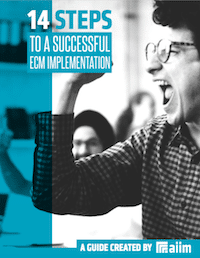The AIIM Blog
Keep your finger on the pulse of Intelligent Information Management with industry news, trends, and best practices.
Artificial Intelligence (AI) | Big Data | Data Management | Knowledge Management
What is Generative AI? Generative AI has caught fire in the industry – almost every tech vendor has a ChatGPT-like offering (or claims to have one). They are claiming to use the same technology – a large language model (LLM) (actually there are many Large Language Models both open source and proprietary fine-tuned for various industries and purposes) to access and organize content knowledge of the enterprise. As with previous new technologies, LLMs are getting hyped. But what is generative AI?
Share
Data Management | Enterprise Content Management (ECM) | Intelligent Information Management (IIM)
This is an article about names and whether or not they matter. My first intuition was to open with the quote, “What's in a name? That which we call a rose by any other name would smell just as sweet,” but I thought better of it. Not because it was too cliche, which it was, but because it immediately transported me back to my sophomore year of high school, when the greatest achievement of my life up to that point was winning the role of Romeo in the drama club's production of Romeo and Juliet. Please spare me the reminder of my nerdy teenage years! Anyway, onto the matter at hand. The purpose of this article is to begin a conversation about data and content and whether or not the long-held distinction between the two is still important. I'm admitting to you upfront that I don't have the answer. Instead, I only aim to share what I know.
Share

Making an ECM implementation successful requires planning and attention to detail. The best way to create the right solution is to identify organizational goals and priorities. Learn how to manage a successful implementation in our free guide.
Companies are dealing with more data than ever before. In a complex IT environment, the challenge of maximizing the value of that data can be daunting. Everyone in an organization wants to excel, but many do not have holistic approaches for measuring the ongoing status and enhancement of their business data. Not doing so can result in lower overall company performance, incomplete or incorrect data to drive decisions, and undue stress, driving lower overall employee satisfaction.
Share
Blockchain is one of the most important new technologies that has impacted the business world in the last decade. Along with cloud computing, artificial intelligence (AI), and robotic process automation (RPA), blockchain is transforming business operations and challenging traditional methods the world over. For those who are considering adoption for one of its many applications, blockchain can hold great promise.
Share
In 1989, I took my first decision sciences course and started coding in SAS at the age of 20. I greatly enjoyed pulling discoveries buried within mounds of data, although and even small datasets had many discoveries back then. At the root of every model I’ve built, even the simplest, was a solid understanding and foundational rigor of statistical theory. When computing simple statistics or developing descriptive models, I thought through the math behind the model and how this would impact the formation, application, and interpretation.
Share
Data Management | Document Management | Enterprise Content Management (ECM)
Since the 1980s, relational databases have been used to store business information. They were a huge step forward over hierarchical databases, which organized data into rigid tree-like structures with connections between data elements defined by the links in the structures.
Share